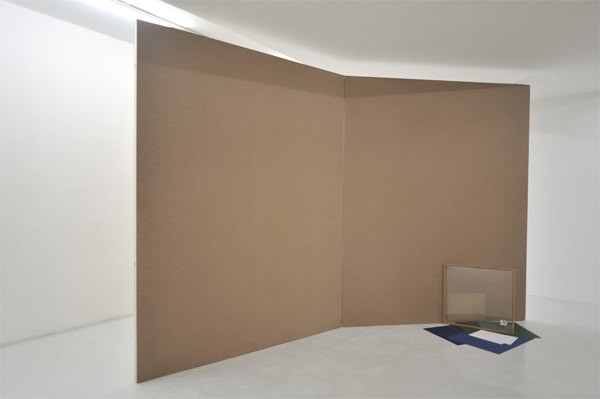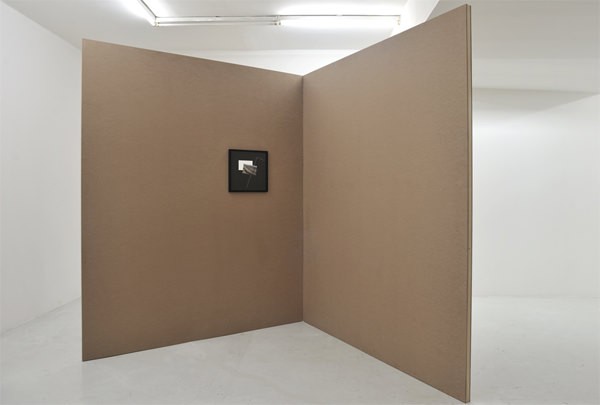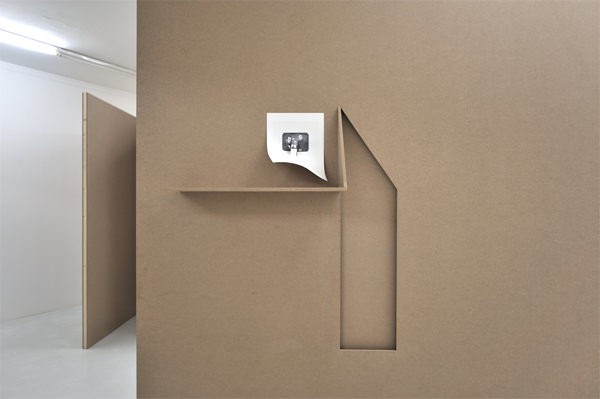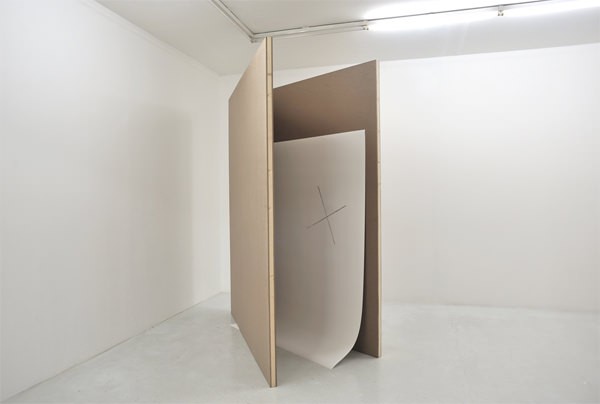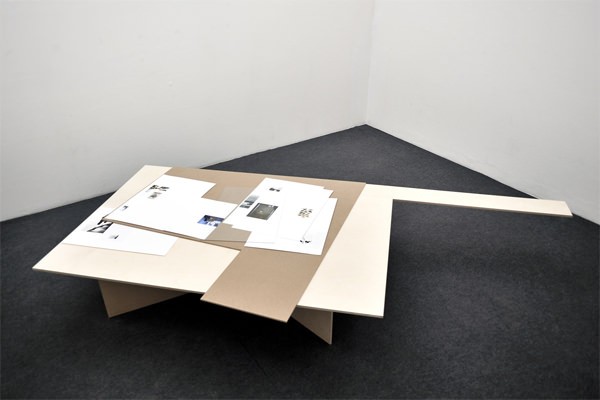Mark Geffriaud: If one were only an Indian
A solo show by Mark Geffriaud
gb agency
From January 17 to March 7, 2009
“If one were only an Indian, instantly alert, and on a racing horse, leaning against the wind, kept on quivering jerkily over the quivering ground, until one sheds one’s spurs, for there needed no spurs, threw away the reins, for there needed no reins, and hardly saw that the land before one was smoothly shorn heath when the horse’s neck and head would already be gone.”
Franz Kafka, by Sander L. Gilman, published by Reaktion Books, 2005
Mark Geffriaud chose the title of the Kafka short story “If one were only an Indian” to name his first solo exhibition at gb agency as much to highlight the workings of a hypothesis whose main issue is to undo its premises as to initiate a certain number of questions associated with the perception and portrayal of space, the multiplicity of points of view, and movement.
Using panels to convey three different angles on, under or through which his works are shown, Geffriaud breaks up the exhibition space to create islands of architecture. The panels become places to show the works as well as parts of a composition. Through the continuity of formal and material elements based on fundamental codes and tools of (re-)presentation (the layout, the fold, the hole; the image and its support; foreground and background both physical and metaphorical) each work and mechanism favors the pursuit of a different path leading to constantly changing points of view. In sum, for Geffriaud “this exhibition creates a series of hypotheses about our geometric understanding of space; in other words the mirages of an Indian heading toward the horizon.”

